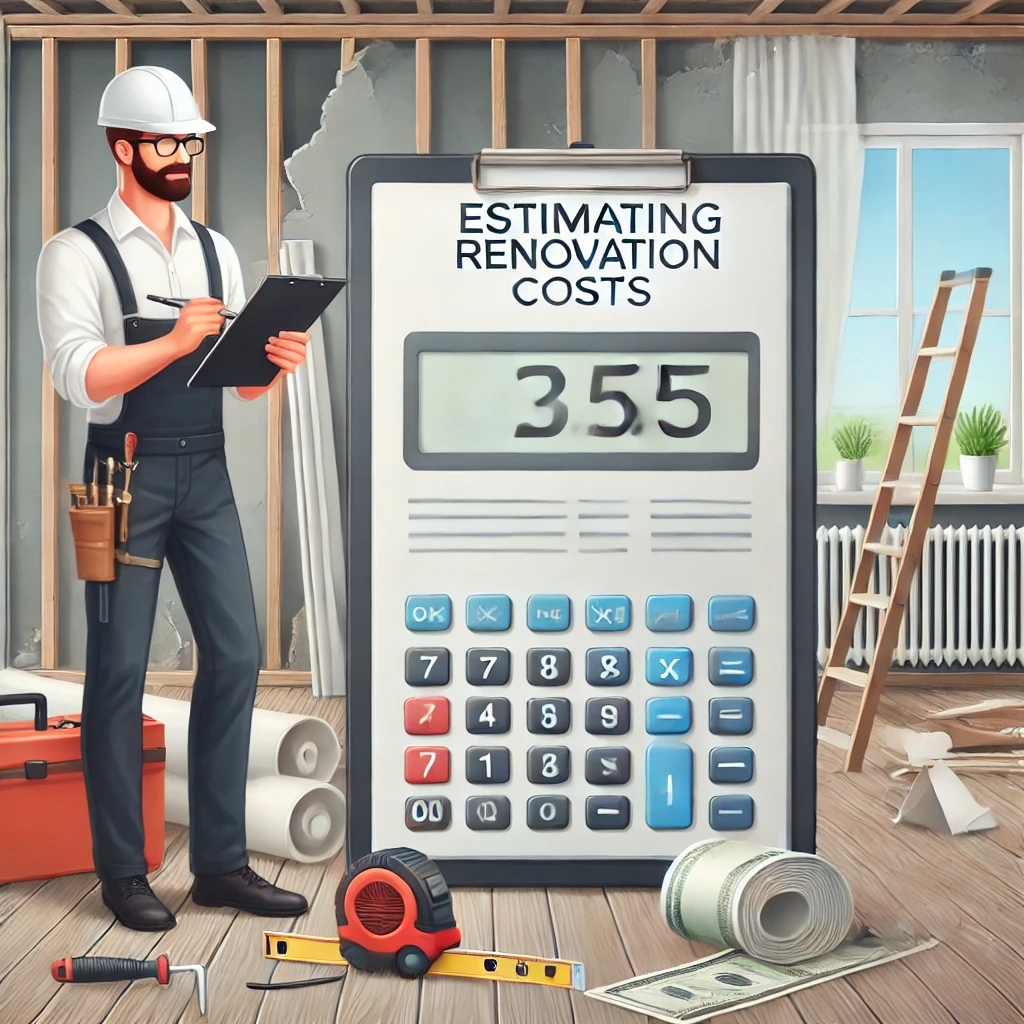If there’s one aspect of house flipping that can make or break your investment, it’s your ability to accurately estimate renovation costs. Too many first-time flippers underestimate the true scope of work, leading to shrinking profit margins, longer timelines, and an overall stressful experience. In Seattle, where the cost of labor and materials is higher than the national average, the stakes are even higher.
This guide will help you accurately budget for your next flip by breaking down the process of estimating renovation costs—from initial inspections to calculating the final numbers. By the end, you’ll know exactly what to look out for and how to avoid the common pitfalls that can derail even the most promising flips.
1. Inspect the Property Thoroughly Before You Buy
Before you even think about making an offer on a property, you need to have a detailed understanding of its condition. This is where a professional home inspection becomes crucial. Seattle’s older homes often hide costly issues that won’t show up until after the purchase, and you can’t afford to be surprised.
- Foundation and Structural Issues: In Seattle, rain and moisture can lead to foundation problems, especially in older homes. A foundation repair could cost anywhere from $5,000 to $30,000, depending on the severity of the damage. Structural issues often go hand-in-hand with foundation problems, and these repairs can be equally costly.
- Electrical and Plumbing Systems: Many homes in Seattle have outdated plumbing and electrical systems that require complete overhauls to meet modern codes. For example, upgrading an old knob-and-tube electrical system can cost upwards of $10,000, and replumbing a home can easily set you back another $8,000 to $15,000.
- Moisture and Mold: Seattle’s rainy climate makes moisture problems a common issue. You’ll want to look for signs of water damage or mold, particularly in basements, crawl spaces, and attics. Mold remediation can cost anywhere from $1,500 to $10,000, depending on how extensive the damage is.
Pro Tip: Bring in a licensed contractor for an estimate before closing the deal. A detailed contractor walkthrough can help you spot potential deal-breakers early on, saving you thousands in unexpected repair costs.
2. Break Down Renovation Costs Room by Room
Once you’ve identified the property’s overall condition, it’s time to break down renovation costs. Each room will come with its own set of required updates, and understanding these will give you a more accurate estimate of your overall budget.
- Kitchen Renovation Costs: Kitchens are often the heart of a flip, and they provide the highest return on investment. In Seattle, a mid-range kitchen renovation typically costs between $20,000 and $50,000, depending on the finishes. Here’s what to consider:
- Cabinets: Expect to spend $8,000 to $15,000 on new cabinets.
- Countertops: Materials like granite or quartz will cost around $2,000 to $5,000, depending on the size and layout of the kitchen.
- Appliances: Budget $5,000 to $10,000 for modern, stainless steel appliances.
- Bathroom Renovation Costs: Bathrooms are the second most important area in terms of ROI. For a mid-range bathroom update, expect to spend between $10,000 and $25,000:
- New Fixtures: Bathtubs, showers, and sinks can range from $3,000 to $6,000.
- Tiling: Tile work will cost around $2,000 to $5,000 for floors and walls.
- Plumbing: If you need to rework plumbing lines, budget for an additional $3,000 to $7,000.
- Flooring Costs: The choice of flooring can greatly impact the perceived value of the home. Hardwood flooring installation in Seattle runs around $8 to $15 per square foot, while tile or vinyl can be slightly cheaper at $4 to $10 per square foot.
- Painting and Cosmetic Updates: A fresh coat of paint is one of the most cost-effective ways to update a home. Interior painting costs roughly $3 to $4 per square foot, while exterior painting will cost more—anywhere from $4,000 to $10,000, depending on the size of the house.
Pro Tip: Don’t cut corners on kitchens and bathrooms. These rooms often make or break the deal with buyers, so while it’s important to stick to your budget, prioritize quality where it matters.
3. Account for Major Systems
Beyond cosmetic upgrades, major systems like HVAC, roofing, and electrical need to be considered in your budget. These systems are critical to the home’s functionality and safety, and neglecting them can result in expensive fixes down the line.
- HVAC Systems: If the home needs a new HVAC system, you’re looking at anywhere from $5,000 to $12,000 depending on the size of the home and whether you’re installing central air conditioning or upgrading the heating system.
- Roofing: In Seattle, roofs take a beating from the elements. Replacing an old or damaged roof can cost anywhere from $8,000 to $20,000, depending on the material used. Metal and asphalt shingles are common in this region, with metal roofing typically on the higher end of the cost scale.
- Electrical Upgrades: If the home’s electrical panel or wiring needs upgrading, you’ll spend between $5,000 and $10,000. Seattle’s building codes require modern electrical systems to be installed, so ensure you’re budgeting for any necessary upgrades.
Pro Insight: Don’t overlook inspection fees, permits, or labor costs when estimating the budget for these systems. Labor in Seattle is expensive, with some contractors charging $75 to $125 per hour.
4. Budget for the Unexpected: The 10-15% Rule
Even with the most thorough inspections, things can go wrong. A well-planned renovation can uncover hidden surprises—anything from structural problems to asbestos in older homes (a common issue in Seattle properties built before 1980).
That’s why it’s crucial to set aside 10-15% of your total renovation budget for contingencies. For example, if your total renovation costs are projected at $80,000, you should set aside an additional $8,000 to $12,000 for unforeseen expenses.
- Common Unexpected Costs:
- Foundation repairs
- Electrical rewiring
- Plumbing replacements
- Pest infestations (termites, rodents)
- Asbestos or lead paint removal
Pro Tip: Have your contractor review the budget with you before starting work. A good contractor will anticipate where unexpected costs might arise and help you plan accordingly.
5. The 70% Rule: Know Your Limits
The 70% rule is a critical calculation for ensuring that your flip remains profitable. It states that you should pay no more than 70% of the property’s After Repair Value (ARV) minus the estimated renovation costs.
For example:
- If a home’s ARV is $600,000, and you estimate that renovations will cost $100,000, the 70% rule dictates that you should pay no more than $320,000 for the home.
- 70% of ARV: $600,000 x 0.70 = $420,000
- Minus Renovation Costs: $420,000 – $100,000 = $320,000
This formula ensures you’re leaving enough room for profit after repairs and selling costs are factored in.
6. Optimize for Efficiency Without Sacrificing Quality
While it’s important to maintain a realistic budget, being efficient doesn’t mean cutting corners. Instead, focus on areas where you can save without sacrificing quality.
- Bulk Purchasing: Buy materials in bulk to save on costs. Many home improvement stores offer discounts for large orders of materials like flooring, paint, and tiles.
- Reuse Where Possible: Sometimes, cabinets or countertops can be refinished instead of replaced, saving thousands of dollars while still offering an upgraded look.
- Smart Contractor Relationships: Build relationships with trusted contractors who understand your budget constraints and are willing to work with you to keep costs low without sacrificing quality.
Pro Tip: Shop at Seattle-area salvage yards or reuse stores like Second Use Building Materials for high-quality, gently-used materials. This can help you cut down on costs while still offering unique, sustainable options for your flip.
Conclusion
Successfully estimating renovation costs is about finding the right balance between thorough planning and flexibility. With Seattle’s older housing stock and high costs of labor, it’s easy to get caught off guard by unexpected expenses, but by using these strategies, you can budget more accurately, avoid common pitfalls, and maximize your profits.
Remember, the more detailed and realistic your budget, the better your chances of turning a profit in the Seattle real estate market. Stick to your numbers, build in contingencies, and always be prepared for the unexpected—it’s what separates successful flippers from the rest.





